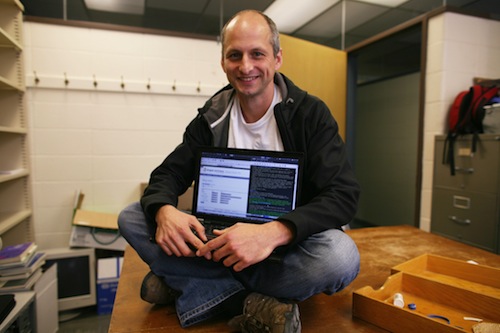 It’s difficult to imagine a world without digital technologies. After all, in this digital age almost everything whether in a small or large capacity incorporates some form of technology. This is highly evident in academia where non-technical fields such as history are attempting to integrate technology into academic scholarship.
It’s difficult to imagine a world without digital technologies. After all, in this digital age almost everything whether in a small or large capacity incorporates some form of technology. This is highly evident in academia where non-technical fields such as history are attempting to integrate technology into academic scholarship.
The new undergraduate third-year history course ‘Digital History’ at the University of Toronto has been such an attempt.
Taught by Matt Price, a lecturer at the University of Toronto, the course introduces students to digital humanities through the lens of history.
The aim of the course is to allow students to appreciate digital history as a field and as a methodology that historians can use when conducting research.
“In one sense everything that historians do is digital,” said Price.
“We all write on computers, we all publish in journals that have a web presence, and so forth.”
With this being said, Price believes that it’s essential for students to have at least some familiarity with digital technology and tools.
Techniques that students can use from digital history include statistical methods, distant reading, and algorithmic learning.
“Just some minimal familiarity with methods [from digital history] is going to be really important. There’s no doubt that as [digital] analysis becomes more and more available, it’s going to be more popular.”
Classes are generally characterized by two sessions. The first session is devoted to discussing class readings related to digital history, while the second session consists of technical exercises in computer programming.
Conducted as a seminar, students within the course receive a high level of attention and support during the technical exercises. This is especially beneficial to students unfamiliar with computer programming or digital technologies.
However, while learning technical skills are a component of the course it is certainly not the main objective of the course.
Because the course is taught in the summer, it is consequently constrained by time, which has influenced the design of the course.
“In terms of technical skills I’m trying to move away from just teaching html and css,” said Price.
“The last version of this class focused on a substantial project that everybody did. Instead what I’m trying to do now because it’s a summer course is give people exposure to several different pieces of digital history because there are so many different pieces.”
Although the course is new, digital humanities courses offered by the Department of History in the past have been well received.
For example, ‘Hacking History’, a fourth-year history course that teaches digital methods to students in order for them to create historical websites for partner organizations, has been acknowledged by students to be beneficial in terms of imparting them with knowledge that makes them more marketable in the workplace.
Within ‘Hacking History’, students learn to use and implement digital tools such as WordPress and html, which are skills demanded by some employers.
Returning to ‘Digital History’, the course also teaches students how to use digital tools.
“What I want is for [Digital History] to be the starting point for Hacking History,” said Price, “so that you come to ‘Hacking History’ already primed with a set of technical skills and a vision of how you might use those skills to tell new kinds of stories.”
Nevertheless, Digital History is currently not mandatory prerequisite for taking Hacking History.
With the number of digital history projects taking place at the University of Toronto such as Professor of History Nicholas Terpstra’s project about producing a digital map of sixteenth century Florence and Assistant Professor of History Nathalie Rothman’s digital scholarship on the Mediterranean, ‘Digital History’ looks to be promising addition to the digital history initiatives launched by the university.
